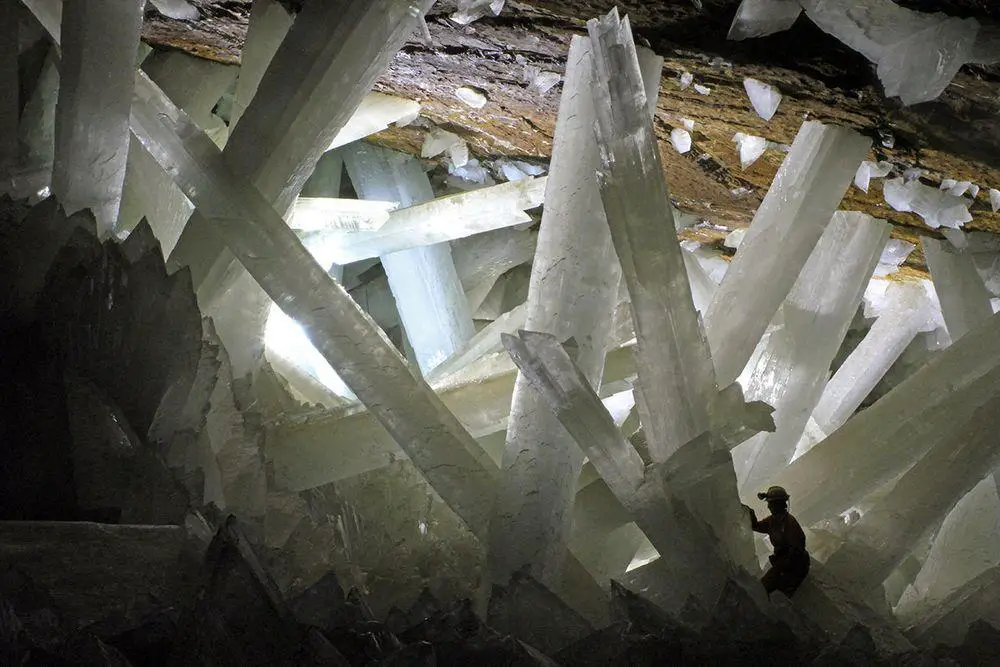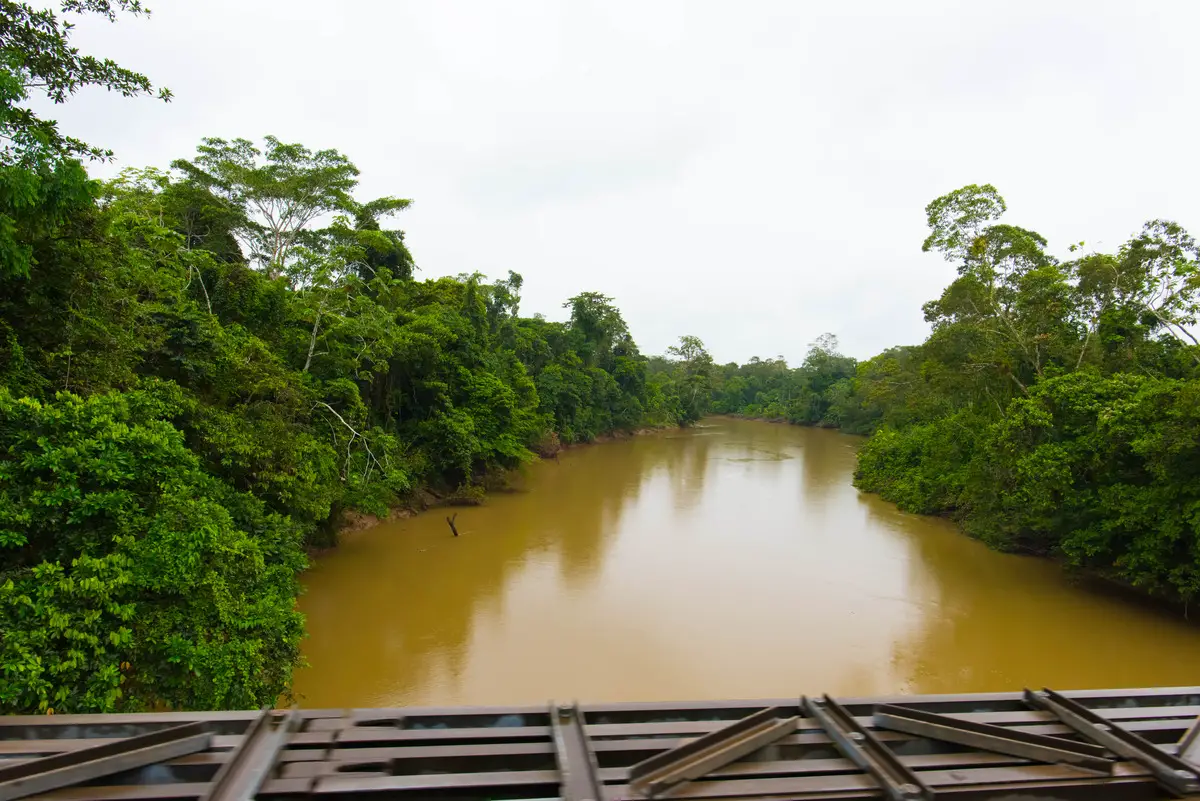Wonder
Forest on Robinson Crusoe Island
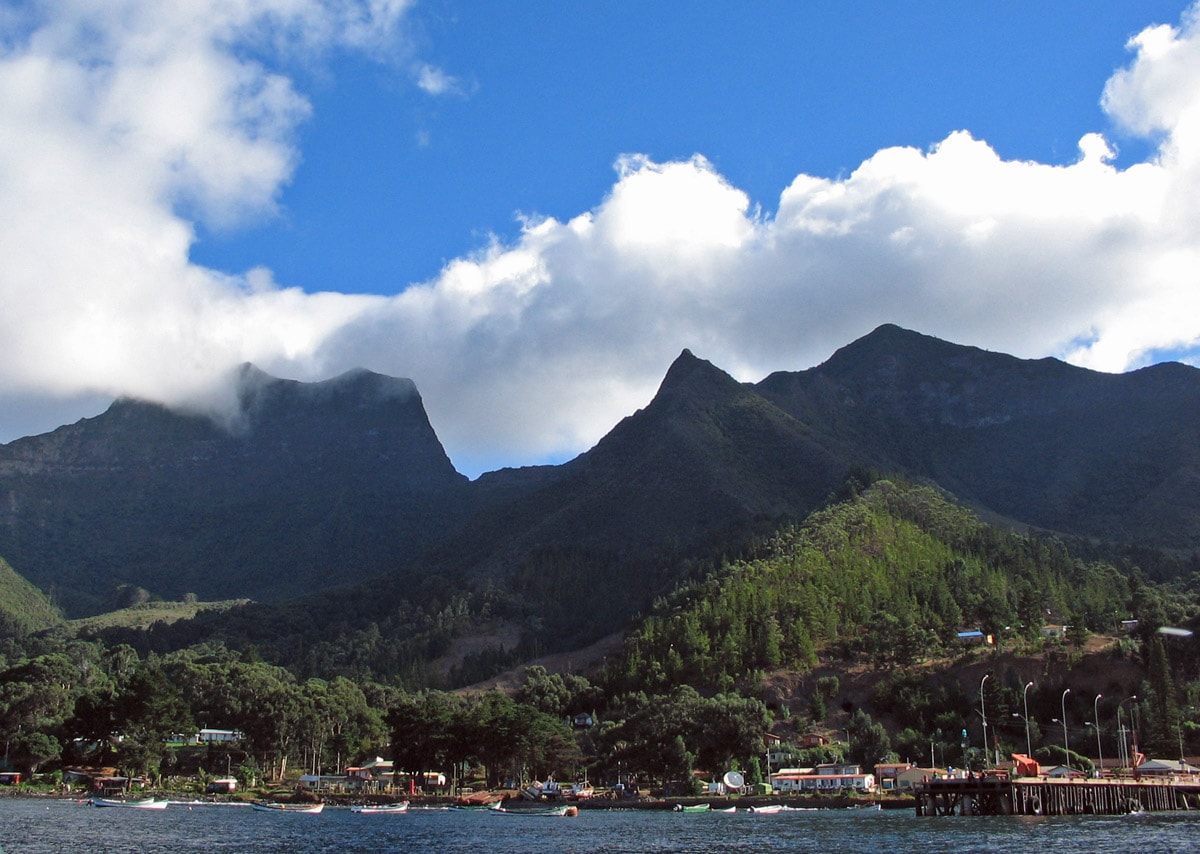
 In short
In short
Juan Fernández islands over the last few million years have served as exciting laboratories of evolution – more than one hundred of endemic plant species have developed on these small islands. Unique in the world is forest on Robinson Crusoe Island – all tree species (some 20) of this small forest are endemic – growing ONLY in this forest.
 49.8%
49.8%
GPS coordinates
Location, address
Dominant species
Area
Map of the site
If you see this after your page is loaded completely, leafletJS files are missing.
 In detail
In detail
Natural history
The volcanic Robinson Crusoe Island rose from the depths of the Pacific some 4.2 – 3.8 million years ago. It is located some 600 km from South America. The island has an area of 9,300 ha, and the highest summit is El Yunque, 916 m.
Climate on the island is sub-tropical, mild, and rainy – no wonder that the island got covered with dense vegetation. Plants arrived here occasionally – some by the streams, some were brought by occasional birds. Some plants on the island are relicts – their closest relatives were living on continents but are extinct now. Over time here evolved numerous local species of plants.
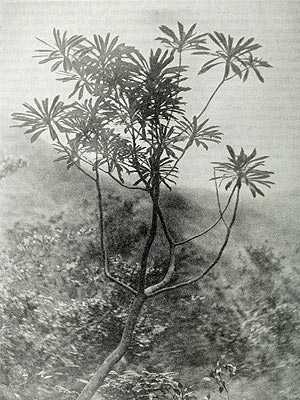
Colonies
The unique ecosystem has survived on these small islands thanks to the fact that the people came here late. Juan Fernández islands were discovered in 1574 and a small settlement here was established in 1591 – 1596.
Unfortunately the establishment of the first colony started the introduction of alien plants and animals – goats, pigs, and dogs. Colonies on the island were abandoned and then again established, there were living also castaways, including Alexander Selkirk – the possible prototype of Robinson Crusoe.
Unfortunately the coming of the people brought catastrophic change to the ecosystem. Forests have been logged and burned, and an unknown number of unique species have been exterminated by the introduced animals and plants.
The forest was nearly intact until the early 19th century, but then logging started here. In the late 19th century started intense soil erosion and islanders were forced to make forest plantations in some parts of the island to prevent the loss of soil. Unfortunately, erosion processes continue here up to this day.
National park and research
The government of Chile declared a national park here in 1935. In 1977 islands became a UNESCO-approved Biosphere Reserve.
Today Robinson Cruzoe island is a recognized attraction point to many scientists. There are few other small islands in the world with that much scientific work devoted to them.
Much effort is put to preserve the unique natural heritage. An 8.3 km long fence was built to prevent the cattle from entering into a forest.
The biggest danger to the ecosystem of Robinson Crusoe Island is created by alien plants. Three such plants are especially dangerous to the local plants: Aristotelia chilensis, Ugni molinae, and Rubus ulmifolius. It seems that this terrible trio alone could replace all the local vegetation over the next 70 years.
Ecolocigal hotspot
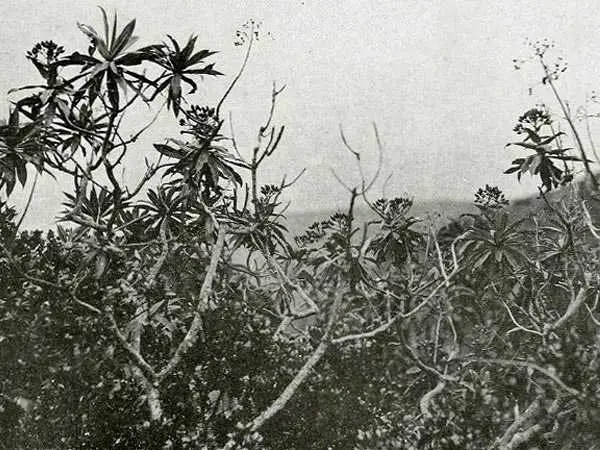
Extraordinary endemism on these islands makes them unique in the world, with a specific ecosystem – the Juan Fernández Islands temperate forest – met only on Juan Fernández archipelago (basically – Robinson Crusoe Island). As a result, Juan Fernández Islands are one of two ecological mini-hotspots in the world – another is the Galapagos Islands.
Robinson Crusoe Island offers fantastic scenery, with more than 600 m tall sea cliffs and magnificent mountains and ravines. The part of the island, which rises above 600 m in height, is constantly shrouded in clouds – the forest there is soaked, and water is dripping from the leaves constantly.
The forest in Robinson Crusoe Island is divided into altitude zones. Tall forest (with much impact from alien species) grows at 300 – 500 m height, lower montane forest – at 500 – 700 m, tree fern forest – at 700 – 750 m, and high brushwood on exposed cliffs – at 500 – 850 m height.
These forests are different – but all of them are composed of endemic tree species, unique worldwide.
Endemics
132 species of plants on Juan Fernández islands are endemic (with 1 endemic plant family and 12 endemic genes). Most of these plant species are met only on Robinson Crusoe Island. 79 species are native – but met elsewhere as well. And a huge lot – some 260 species – are introduced by man.
Amazing is the diversity of ferns – out of 53 species of local ferns 23 are endemic. Happily, ferns withstand the degradation of the ecosystem much better.
Thus Robinson Crusoe Island has the highest density of endemic plants per unit of area in the world – no other oceanic island can compete in this respect.
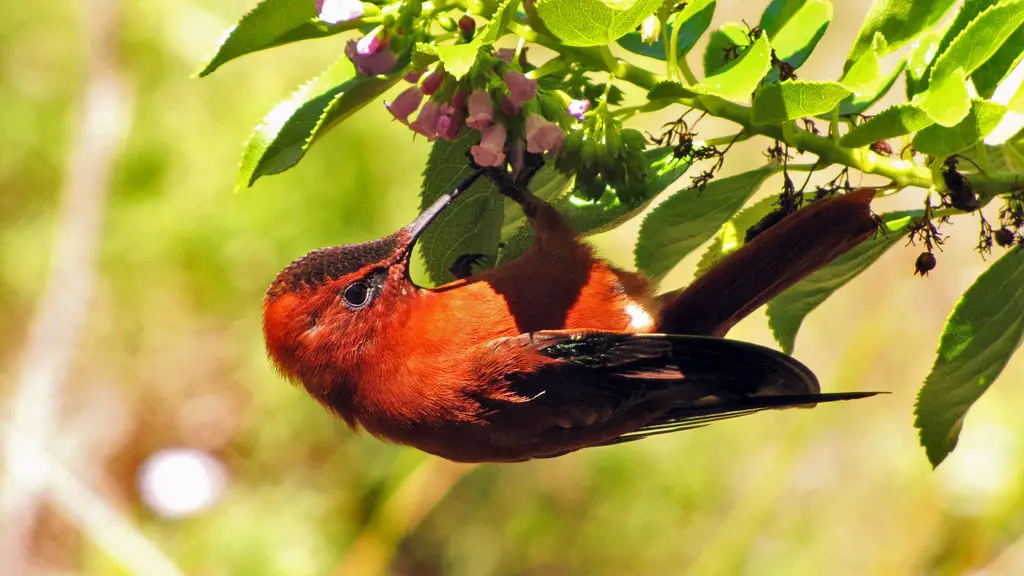
Endemic animals
Less impressive is the number of endemic animal species. There are known more than 230 endemic insects (e.g. Kalotermes gracilignatus), but the most interesting are the birds.
Juan Fernández Firecrown (Sephanoides fernandensis) is a rare and endangered hummingbird, the only endemic hummingbird on an oceanic island. Although the native forest is the original habitat of this beautiful bird, today they are often seen in the gardens in San Juan Bautista village.
Another endemic forest bird is Juan Fernández Tit-Tyrant (Anairetes fernandezianus).
Endemic plant species of Robinson Crusoe forest
This list is not exhaustive – there are even more endemic species of plants!
- Apium fernandezianum
- Arthropteris altescandens – fern, grows also on Masafuera island
- Asplenium macrosorum – fern, also on Masafuera island
- Asplenium stellatum – fern, also on Masafuera island
- Azara serrata var. fernandeziana – shrub with yellow flowers
- Berberis corymbosa – small shrub with yellow flowers, grows on cliffs
- Blechnum cycadifolium – tree fern, also on Masafuera island, forms very dense stands.
- Blechnum mochaenum – small fern, also on Masafuera island
- Blechnum schottii – a beautiful fern, climber
- Boehmeria excelsa – tree
- Carex berteroniana – grass, also on Masafuera island
- Centaurodendron dracaenoides – tree with impressive flowers
- Centaurodendron palmiforme – very rare tree
- Chenopodium crusoeanum
- Chenopodium sanctae-clara – tree, today found only on a small island next to Robinson Crusoe Island
- Chusquea fernandeziana – bamboo
- Colletia spartioides – grows on cliffs
- Coprosma oliveri – shrub or tree
- Coprosma pyrifolia – tree, also on Masafuera island
- Cuminia eriantha var. eriantha – a shrub with beautiful flowers
- Cuminia eriantha var. fernandezia
- Cuminia fernandezia – a shrub with beautiful flowers
- Dendroseris berteroana
- Dendroseris litoralis – tree. At one moment in the 1980s, only 3 plants remained, still endangered. Beautiful orange flowers. Some plants are grown in local gardens.
- Dendroseris macrantha
- Dendroseris marginata – grows on cliffs
- Dendroseris micrantha
- Dendroseris neriifolia – a tree with white flowers, only two are remaining
- Dendroseris pinnata
- Dendroseris pruinata – white flowers, found also on a small island next to Robinson Crusoe Island
- Dicksonia berteroana – tree fern, grows more than 5 m tall, mainly in upper montane forest
- Drimys confertifolia – tree, also on Masafuera island. Abundant, up to 25 m tall.
- Dysopsis hirsuta – herb
- Elaphoglossum squamatum – one remaining
- Erigeron fernandezianus – small herb, also on Masafuera island
- Eryngium bupleuroides – grows on cliffs
- Eryngium inaccessum
- Eryngium x fernandezianum
- Escallonia callcottiae
- Fagara mayu – tree
- Greigia berteroii
- Gunnera bracteata – enormous, up to 1.5 m tall herb with large leaves, mainly in upper montane forest.
- Gunnera bracteata x peltata
- Gunnera glabra – a synonym for Gunnera peltata?
- Gunnera peltata – one of the most spectacular endemics on the island. This giant "rhubarb" grows up to 2 m tall and forms dense growes at the bottom of the deep ravines.
- Haloragis masatierrana
- Hymenophyllum cuneatum var. rariforme – fern in upper montane forest
- Hymenophyllum rugosum – fern in upper montane forest
- Juania australis – Chonta Palm, the only species in the genus, up to 15 m tall
- Lactoris fernandeziana – small, flowering shrub, the only representative of Lactoridaceae family. Grows in the cloud forest. The most exotic of the local plants.
- Machaerina scirpoidea
- x Margyracaena skottsbergii – a possible intergeneric cross between the local Margyricarpus diginus and introduced Acaena argentea. Possibly extinct on the island, only in a botanical garden in mainland Chile.
- Margyricarpus digynus – small herb
- Megalachne berteroana – grass, also on Masafuera island
- Megalachne masafuerana – grass, also on Masafuera island
- Megalastrum inaequalifolium – fern
- Myrceugenia fernandeziana – dominating tree in the forest, especially in upper montane forest, up to 25 m tall.
- Notholaena chilensis – small fern, also on Masafuera island
- Ochagavia elegans – beautiful bromeliad, grows on exposed cliffs
- Ophioglossum fernandezianum – fern
- Peperomia berteroana – also on Masafuera island
- Peperomia fernandeziana var. oblongifolia – herb, also on Masafuera island
- Peperomia margaritifera var. margaritifera
- Peperomia margaritifera var. umbraticola
- Pernettya rigida – grows on cliffs
- Plantago fernandezia
- Podophorus bromoides – extinct
- Polypodium intermedium subsp. intermedium – fern
- Polystichum tetragonum – fern, also on Masafuera island
- Pteris berteroana – fern, also on Masafuera island
- Raphithamnus venustus – called – Juan Bueno. Shrub and small tree with fine lilac flowers, grows also on Masafuera island
- Rea pruinata
- Robinsonia berteroi – tree, the last remaining plant died in Mai 2004
- Robinsonia evenia – yellow flowers
- Robinsonia gayana – greenish-yellow flowers, grows on cliffs
- Robinsonia gracilis – yellow flowers
- Robinsonia macrocephala – possibly extinct
- Robinsonia masatierrae – extinct since 1989
- Robinsonia thurifera
- Rumohra berteroana – fern, also on Masafuera island
- Santalum fernandezianum – became extinct due to extensive harvesting. Last seen in 1908.
- Selkirkia berteroii – shrub
- Serpyllopsis caespitosa – also on Masafuera island
- Solanum fernandezianum
- Sophora fernandeziana var. fernandeziana
- Sophora fernandeziana var. reedeana
- Spergularia confertiflora var. confertiflora – small herb, also on Masafuera island
- Spergularia confertiflora var. polyphylla – small herb, also on Masafuera island
- Thyrsopteris elegans – tree fern, the only species in the genus, grows in upper montane forest. Met on Masafuera island as well.
- Trichomanes ingae – fern
- Trichomanes philippianum – fern
- Ugni selkirkii – shrub
- Uncinia douglasii – also on Masafuera island
- Urtica glomeruliflora – also on Masafuera island
- Wahlenbergia berteroi – one plant also on Santa Clara Island
- Wahlenbergia fernandeziana – small plant with wonderful white flowers
- Wahlenbergia grahamiae – small shrub with white flowers
- Wahlenbergia larrainii – possibly the same fernandeziana. Extinct in wild
- Yunquea tenzii – tree, no flowers of this tree have been seen, only 23 trees known
References
- Ana M. Abarzúa and Cecilia Smith‐Ramírez, Establishing the bases for a long term study about endemic biodiversity in Juan Fernández Archipelago, Chile. Centro de Estudios en Ecología y Biodiversidad (CASEB) Pontificia Universidad Católica de ChileGlobal Exploration. September 2010. Accessed in 07.01.2012.
- Juan Fernandez Islands temperate forest (NT0401). World Wildlife Fund. Accessed in 07.01.2012.
- Atholl Anderson, Simon Haberle, Gloria Rojas, Andrea Seelenfreund, Ian Smith and Trevor Worthy. An Archaeological Exploration of Robinson Crusoe Island, Juan Fernandez Archipelago. 2002. Accessed in 07.01.2012.
- Plantas endémicas del Archipiélago de las islas de Juan Fernández, a set of photographs in Flickr. Accessed in 07.01.2012.
- Clodomiro Marticorena, Tod F. Stuessy, and Carlos M. Baeza. Catalogue of the Vascular Flora of the Robinson Crusoe of Juan Fernandez Islands, Chile, Gayana, v. 55 no. 2 1998. Accessed in 07.01.2012.
Forest on Robinson Crusoe Island is included in the following articles:
 Linked articles
Linked articles
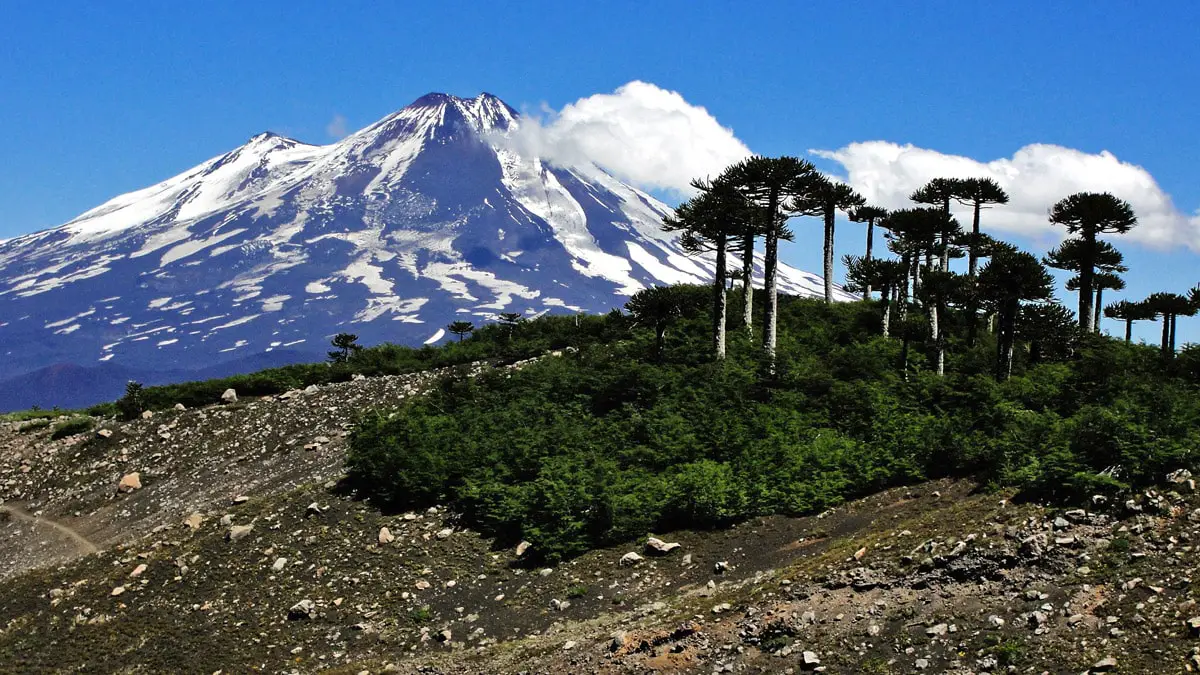
Wonders of Chile
The natural and man-made heritage of Chile is very diverse, also thanks due to the extreme length of the country extending from the driest deserts in the north to the most southern historical inhabited lands of the world in Patagonia. Highlights of Chile are magnificent views of Patagonian Andes and fjords, the volcanic landscape of Northern and Central Chile, and the driest desert of the world – the Atacama.
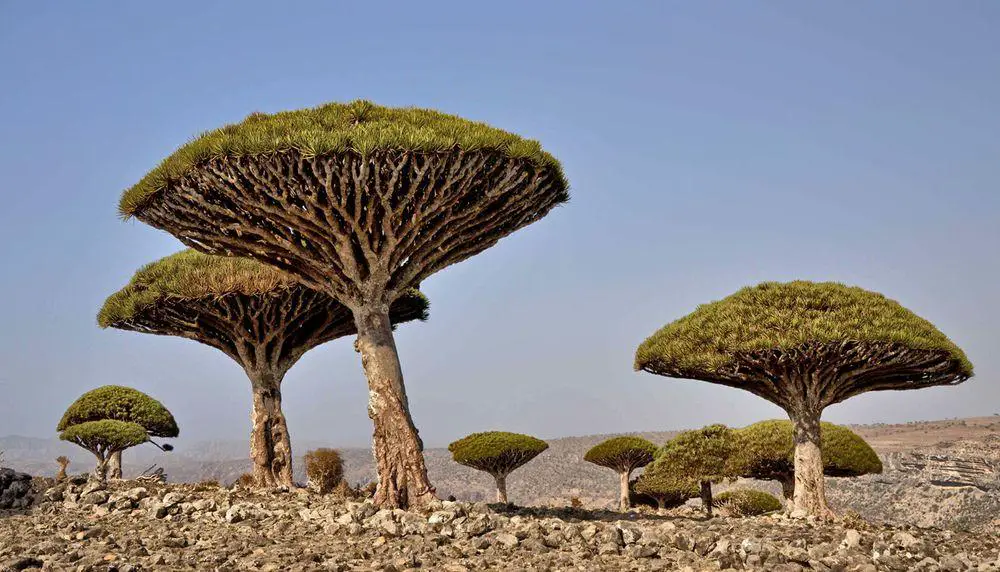
Ecosystems
Biotope is a rather small area with uniform environmental conditions and a specific community of life. Wondermondo describes biotopes and ecosystems which have striking looks, look very beautiful, or have other unusual characteristics.
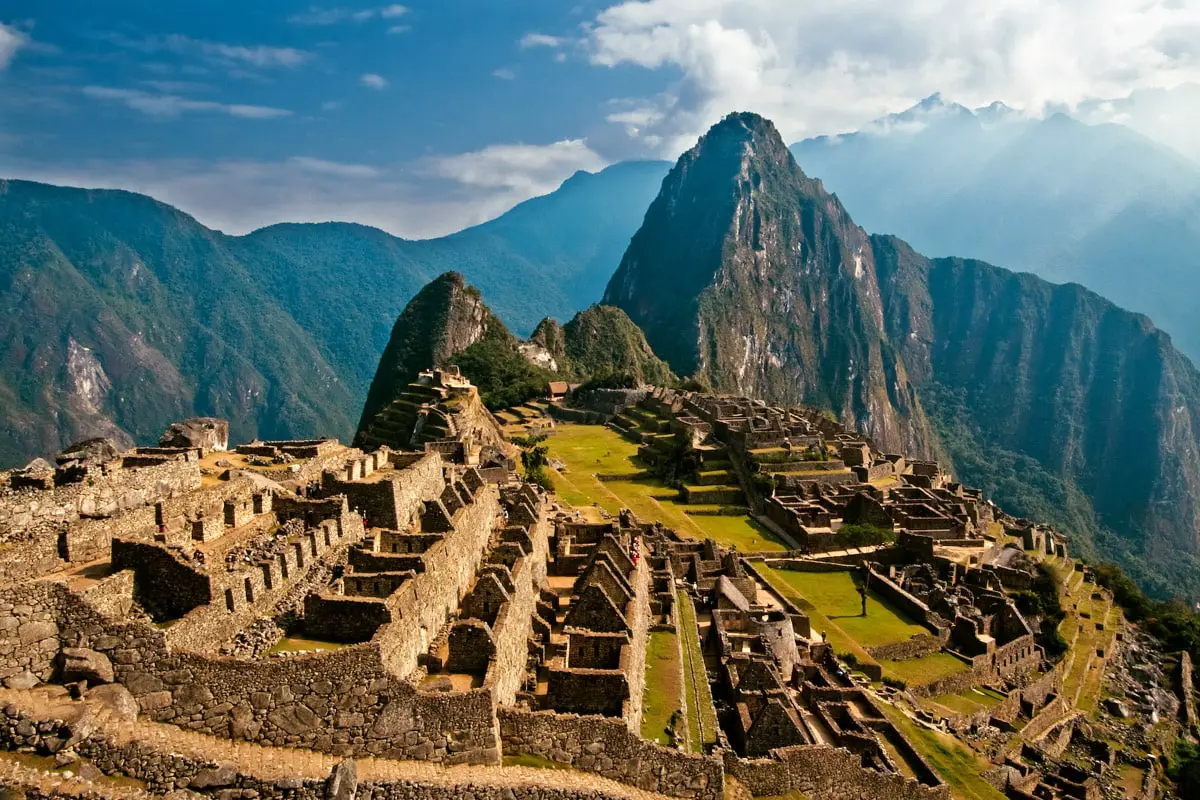
Wonders of South America
There is little doubt – South America is one of the most spectacular… maybe the most spectacular continent of the world.
There is located the second-highest mountain chain in the world, the largest rainforest, the tallest volcanoes, and the tallest and largest waterfalls. The highest biological diversity in the world is reached somewhere near the eastern ranges of the Andes in Ecuador, Peru, or Colombia.
 Recommended books
Recommended books
A Wildlife Guide to Chile
This is the first comprehensive English-language field guide to the wildlife of Chile and its territories–Chilean Antarctica, Easter Island, Juan Fernández, and San Félix y San Ambrosio. From bats to butterflies, lizards to llamas, and ferns to flamingos, A Wildlife Guide to Chile covers the country’s common plants and animals. The color plates depict species in their natural environments with unmatched vividness and realism.
Plants of Oceanic Islands
Bringing together results from over 30 years of research on the Juan Fernández Archipelago off the coast of Chile, this book offers comprehensive coverage of the plants of these special islands. Despite its remote setting in the southeastern Pacific Ocean, the Juan Fernández Archipelago is in many ways an ideal place to ask and attempt to answer basic questions regarding the evolution of vascular plants in an oceanic island environment.

